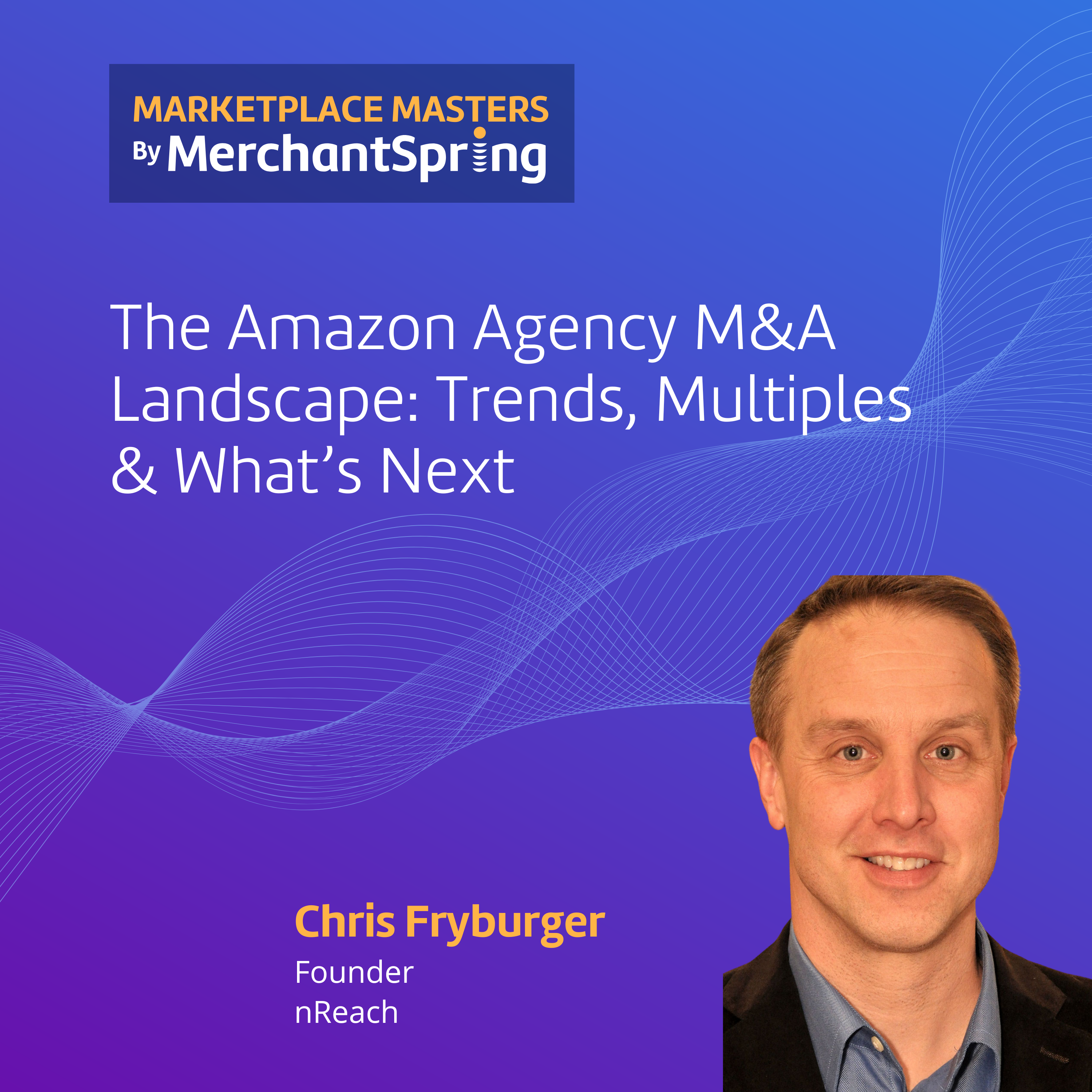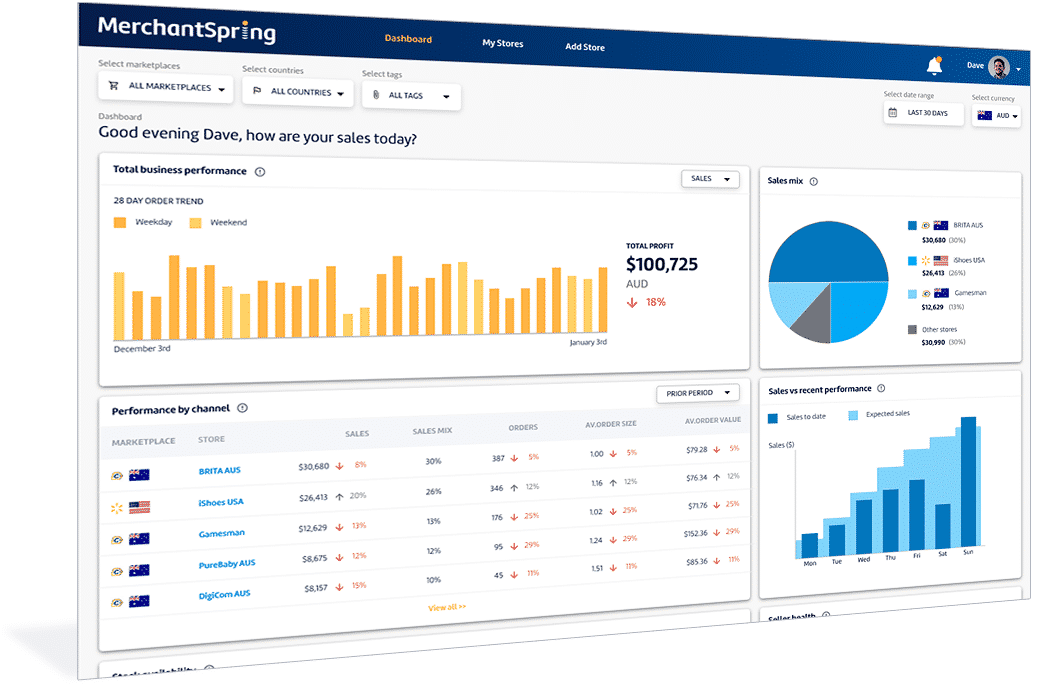What Amazon Agency Owners Need to Know About M&A: Multiples, Buyers & the Path to Exit
Overview
The Amazon agency space is maturing—but that doesn’t mean it’s getting any easier. As agency owners look toward what’s next, many are asking the same question: What is my business worth, and who’s buying? In this episode of Marketplace Masters, we sit down with Chris Fryburger, founder of nReach and author of the Q2 2025 Amazon Agency Investor Report, to cut through the noise and deliver clarity on valuations, deal structures, and preparing for a successful exit.
This is not theory. Chris is tracking real-world data on over 750 agencies worldwide, connecting founders to acquirers, and helping shape deal conversations in real time. Here's what every serious Amazon agency operator needs to know.
The Market Has Evolved—But It’s Still Early
Forget the aggregator-fueled frenzy of the early M&A wave. We’re in a different phase now—one defined by consolidation, smarter buyers, and elevated expectations. Post-COVID saw a massive surge in Amazon agency creation, but many of those businesses are now fading. Why? Because operating in this space is hard.
Chris draws a sharp line between traditional digital agencies and Amazon-native firms. The latter, he says, are unicorns—battle-tested operators who've mastered one of the most demanding platforms in commerce. And the market is finally recognizing that. While the industry may feel crowded, the window for value creation is wide open. This moment feels a lot like Google SEO circa 2005: early, messy, but full of upside.
Multiples by the Numbers: Where Does Your Agency Sit?
Let’s talk real numbers. Valuation multiples for Amazon agencies vary significantly, but here’s how Chris breaks it down:
- Smaller agencies (<$1M revenue / <$500K EBITDA): 0.5–2x EBITDA
- Mid-market agencies ($2–3M EBITDA): 4–6x EBITDA
- Top-tier agencies (~$20M+ revenue): 6–8x EBITDA
That mid-market tier is the sweet spot—especially for founders looking to exit in the next 12–24 months. But getting to the high end of that multiple requires more than revenue. Buyers are hunting for financial hygiene, long-term client contracts, strong executive layers, and stable delivery teams. In other words: repeatable, risk-mitigated operations.
Who’s Buying? Four Types of Acquirers in Play
Today’s buyer pool is more diverse and strategic than ever. Chris outlines four key categories:
- Other Amazon agencies pursuing roll-ups to gain capabilities and scale toward larger exits.
- Traditional digital agencies ($100M+), desperate to solve for Amazon after failed in-house attempts.
- SaaS companies adding services to complement their tools, recognizing that software alone won’t win.
- Institutional investors looking to build portfolios of agency assets with light-touch management.
The most active buyers? Mid-sized digital agencies who’ve lost major pitches due to Amazon gaps. They’re back at the table—ready to acquire expertise they couldn’t build internally.
Beyond EBITDA: What Actually Drives Value
Want to push your multiple higher? Chris lays out the signals that move the needle:
- Clean, audited financials
- Recurring revenue contracts (multi-year preferred)
- A second-tier leadership team (remove the "bus risk")
- Team and client alignment with buyer verticals
- A polished brand presence—yes, your website matters
Founders often ignore their own marketing while delivering elite work for clients. That’s a mistake. Your brand is the first impression investors see—and a reflection of operational maturity.
The AI Wildcard: Is Owning Tech Still Worth It?
Agency owners have long believed that building SaaS tools could boost their valuation. Historically, Chris disagreed. But the rise of AI is shifting that calculus.
We’re entering a future where Amazon agencies will be lean, AI-driven machines. Owners should now think seriously about tech-enabled operations—not just for valuation, but for survival. Whether you’re building your own stack or deeply integrating third-party tools, the agency of the future is part strategist, part engineer, and part algorithm.
Deal Structures: Earn-Outs Are the Norm
This isn’t SaaS. Most Amazon agency deals involve 1–3 year earn-outs, with ~50% cash paid upfront and the remainder tied to performance milestones.
Buyers want assurance—retained clients, stable teams, clean transitions. For founders, this means staying engaged post-deal and (in some cases) stepping into senior roles within a larger organization. If you're dreaming of a fast exit with a full payout, you’ll need to adjust expectations—or accept a significant discount.
Exit Readiness: What to Start Doing Today
Planning to exit in the next 12–24 months? Start acting now. Chris recommends:
- Cleaning up your books and contracts
- Locking in high-margin, long-term clients
- Auditing your financials with agency-specific experts
- Refreshing your brand presence and messaging
- Delegating leadership—build out your C-suite
This isn’t about gaming the process—it’s about becoming the kind of business an acquirer wants to own. Bonus: most of these improvements will grow your profits anyway.
Mistakes That Kill Deals
According to Chris, the #1 deal killer is going it alone. Don’t. Selling an Amazon agency is a nuanced process that demands both M&A and marketplace-specific expertise. Representation matters.
Other pitfalls include poor financials, unclear contracts, no leadership bench, and surprise P&L dips during due diligence. You need time, process, and guidance. That’s how real exits happen.
Ready to Start? Here's the First Step
You don’t need to put a “for sale” sign on your homepage. But if you’re even thinking about an exit, now’s the time to start preparing behind the scenes. Read Chris’s Q2 2025 Amazon Agency Investor Report. Get your house in order. And if you’re serious, connect with someone who knows how to navigate the M&A maze—quietly, strategically, and effectively.
Want to explore more Marketplace Masters episodes, visit https://resources.merchantspring.io/webinar-on-demand now!














Add a Comment